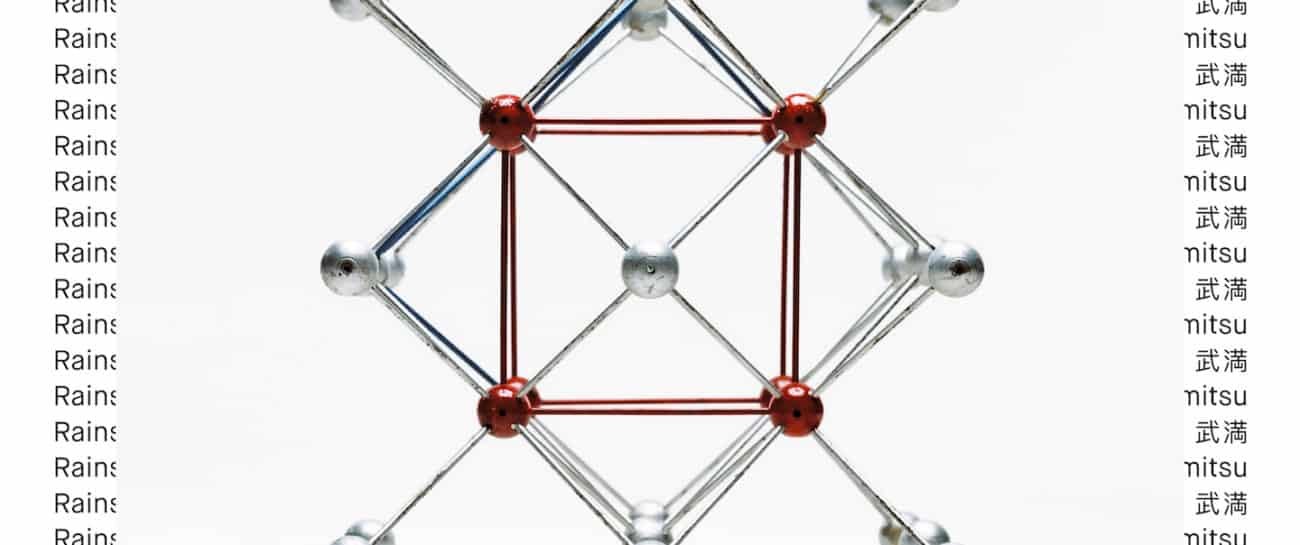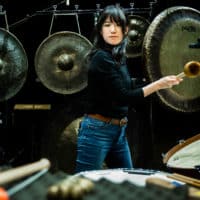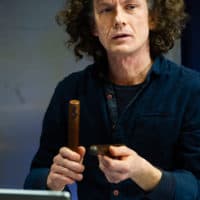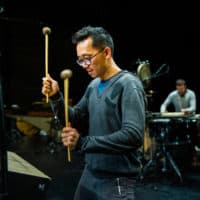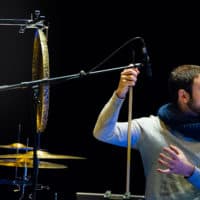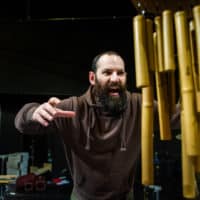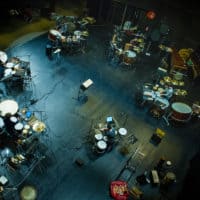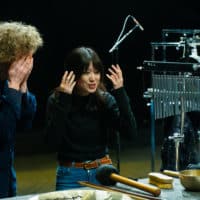Minh-Tâm Nguyen
Regentanz (2018), Toshio Hosokawa
Sange (2016), Malika Kishino
Hiérophonie V (1975), Yoshihisa Taïra
Rain Tree (1981), Tōru Takemitsu
Programm details :
This recital was first performed on 2018, November the 1st at the Funkhaus Cologne as part of the WDR Köln Muzik Der Zeit Festival.
It was recorded on 24 and 25 January 2019 at the Théâtre de Hautepierre and was released on 13 September 2019 on the Percussions de Strasbourg label.
The commission of the piece of Regentanz – Toshio Hosokawa was supported by the Musical Fundation Ernst von Siemens.
With the participation of Rin Otsuka Factory, VanderPlas Vibraphones, Playwood and Aquarian Drumheads.
REGENTANZ – Toshio Hosokawa
Commissioned by : Percussions de Strasbourg, with the support of the Ernst Von Siemens Foundation.
Premiere : 01.11.2018 @ Funkhaus, Cologne, Festival “Musik der Zeit” WDR Köln
Duration : 15 minutes
Regentanz is a work inspired by traditional Japanese ceremonial music, in the image of a Japanese garden where everything seems motionless and where everything finally starts to move. Toshio Hosokawa proposes a piece on the theme of spirituality and shamanism, using the many Asian instruments present in the instrumentarium of the Percussions de Strasbourg : tam-tams, gongs, kwon gongs, baolos, water gongs, mokushos… His music, between inner journey and symbolic interpretation of nature, is characterized by an economy of means, an important place given to silence, resonance and the relationship between sound and corporality.
SANGE – Malika Kishino
Commissioned by : the Ministry of Culture and Communication
Premiere : 05.12.2016 at Teatro comunale Città di Vicenza, Italy
Duration : 15 minutes
A tribute piece written on the occasion of the 10th anniversary of Yoshihisa Taïra’s death, Sange mainly uses the instrumentarium and the implantation of Hierophony V.
During the Sange, a Buddhist ceremony, priests circulate in space reciting the Sutra, while spreading petals to bless the deceased spirits.
The Japanese literal translation means “spreading of petals” (San = spreading; Ge = petals). Originally, fresh lotus flowers and petals were used in this ritual. Today, these are replaced by coloured paper.
In Sange, Malika Kishino uses the gesture of spreading and the movement of the priests as the main sound material and musical gesture.
The numerous play modes, their combinations and the creation of various sound layers use several trajectories in space and thus set the sounds in motion, giving an electroacoustic dimension to the piece.
HIEROPHONIE V – Yoshihisa Taïra
Commissioned by : Ministry of Culture / Royan Festival
First performance : 23.03.1975 @ Royan Festival, by Percussions de Strasbourg
Duration : 18 minutes
“This work, which begins with the primitive acts of percussion and shouting, continues in the second part with the negation of this same act. Here, the act of percussion is very limited. Could we not perceive the serenity of the Soul in the continuous vibration of the instruments?
From afar, one can hardly hear the drums of the popular festival, as if the men joined together by striking the instruments themselves and thus realized the song of the breath of life. In the same way, the six percussionists freely regain the breathing of the body. Through the repeated rhythmic ostinato, I wanted to confirm, in my own way, the essential pleasure of the body.
I dedicate this work to the Percussions de Strasbourg with whom I had an unforgettable musical experience during the rehearsals ” R, D.
Yoshihisa Taïra
RAIN TREE – Toru Takemitsu
Premiere : 31.05.1981 @ Tokyo, Music Today Festival
Duration : 12 minutes
“It is called rain tree because the day after the rainy nights, until at least midday, the tree continues to dribble with all its foliage, as if it were raining. While other trees dry out almost immediately, this one, which is covered with extremely tight leaves as small as the pulp of a finger, retains water in its foliage. A clever tree, don’t you think? »
From An Intelligent “Rain Tree”, Kenzaburo Oe (Original Title: Atama no ii rein tsurii).

